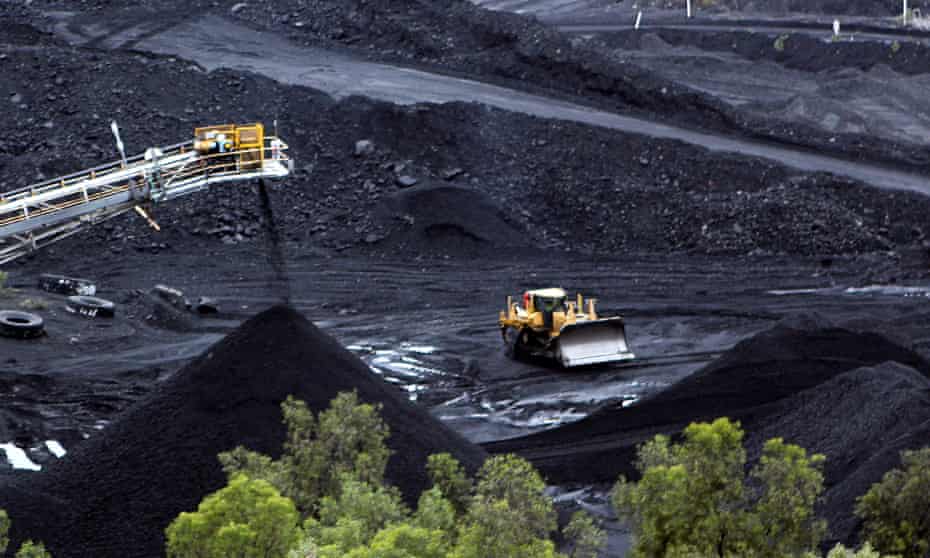Extract from The Guardian
Documents show Anglo American breached carbon limits at Capcoal mine by at least 841,000 tonnes over four years.

The Capcoal mining complex comprises underground and open cut mines in the Bowen basin.
Last modified on Thu 16 Dec 2021 03.32 AEDT
Mining giant Anglo American has admitted to a “large blowout” in greenhouse gas emissions at a coalmine complex in central Queensland that is expected to cost it about $10m in carbon offsets.
Documents released under freedom-of-information laws show the multinational company conceded it had breached emissions limits by at least 841,000 tonnes of carbon dioxide at its Capcoal mine complex in central Queensland.
The Australian Conservation Foundation, which obtained the documents, said it was the latest in a string of emissions breaches at the mine complex, which provides metallurgical coal used in steelmaking, since the introduction of the safeguard mechanism policy in 2016.
Annica Schoo, the foundation’s lead environmental investigator, said the mining giant had consistently relied on loopholes in the policy. Had it been required to pay for emitting above its limit every year since 2016-17 it would face a carbon credit bill of about $50m, she said.
The safeguard mechanism was introduced under then prime minister Tony Abbott to prevent increases in emissions at large industrial sites by requiring polluting companies to buy carbon credits if they emit more than a limit, known as a baseline. In practice, many companies have been allowed to either increase their baselines or change reporting periods to avoid penalties.
Capcoal comprises underground mines and open cut mines in the Bowen basin, inland from Mackay and Rockhampton. In a November 2020 email to officials at the Clean Energy Regulator, an Anglo American staff member acknowledged the company had a “large blowout” in emissions in 2019-20 due to what it described as a single event in which “gas needed to be vented for safety reasons”.
Anglo American agreed with an estimate by the regulator that the mine site would breach its emissions baseline across four years by 841,137 tonnes and said the company had carbon credits to cover that amount. It said its emissions were now “back on track”.
Schoo said at that stage Anglo had already been allowed to twice increase its annual emissions baseline and delay dealing with excess carbon pollution. It was permitted to move from a single-year baseline to a three-year baseline to avoid a breach and penalty, and allowed an increase equivalent to a third of its annual baseline. It was then allowed to extend the three-year reporting period to four years.
She said it meant the site could now legally release 54% more heat-trapping gas than originally allowed five years ago.
Analysis by the research firm RepuTex, carried out for Labor, found emissions covered by the safeguard mechanism had increased by 7% since the scheme began in 2016, and that industrial emissions had leapt 17% since 2005.
Labor has pledged to gradually reduce emissions under the scheme if it wins next year’s federal election. It has promised the emissions covered by the scheme will be reduced by 5m tonnes a year to help reach a national target of cutting carbon pollution 43% below 2005 levels by 2030.
The plan has been supported by some business groups, notably the Business Council of Australia, which has proposed reducing emissions under the safeguard. The opposition leader, Anthony Albanese, says Labor would negotiate with businesses about how the safeguard would be tightened.
The architect of the safeguard mechanism, former environment minister Greg Hunt, once estimated it could be used to cut emissions by 200m tonnes between 2020 and 2030, but the Morrison government has since rejected requiring businesses to cut carbon dioxide.
Cabinet ministers have described Labor’s plan to use the Coalition policy as originally intended as a “sneaky new carbon tax”. The government has not increased its 2030 emissions goals – a 26-28% cut – set by Abbott six years ago.
National emissions are already more than 20% below 2005 levels. The bulk of this occurred before 2013, when Labor was in power. Most of that reduction was due to state governments slowing the pace of forest clearing.
Total emissions from fossil fuels increased between 2005 and the start of Covid-19 lockdowns in early 2020, with a steep rise after 2014 when the national carbon price was abolished.
Schoo said loopholes in the safeguard mechanism needed to be closed and pollution baselines brought down over time as recommended by the government’s Climate Change Authority and promised by Labor.
The Clean Energy Regulator said it was “not correct” for Anglo American to say it had experienced a “large blow out” in emissions. A spokesperson said the safeguard mechanism was “designed to allow businesses to continue normal operations and support business growth, while encouraging lower emissions production”.
A spokesperson for Angus Taylor, the emissions reduction minister, said the conservation foundation was “an activist group making out to be experts”.
Chris Bowen, Labor’s climate change and energy spokesman, said Australia’s biggest businesses had recognised the safeguard mechanism was not working and recommended changes that would keep the country’s industry internationally competitive.
“Labor has adopted improvements to the safeguard mechanism to make sure it works, shoring up Australia’s economic future in a changing global economy,” he said.
The Greens leader, Adam Bandt, said the safeguard was being used to protect fossil fuel companies, not the climate. “We need laws that phase out coal and gas, but the safeguard mechanism allows coal and gas corporations to write their own pollution limits,” he said.
Anglo American did not respond to questions before publication.
No comments:
Post a Comment